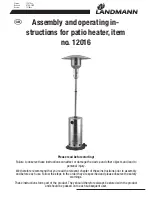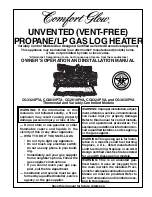
26532-14-0914
Page 30
VFRL Series
Figure 27
VFIL Series
Figure 28
Annual inspection and cleaning by your dealer or
qualified service technician is recommended to prevent
malfunction and/or sooting.
TURN OFF HEATER AND ALLOW TO COOL BEFORE
CLEANING.
Remove any optional decorative covers or decorative glass
material. Gloves are recommended.
PERIODIC CLEANING - Refer to parts diagram for
location of items discussed below.
• Do not use cleaning fluid to clean any part of heater.
• Remove loose particles and dust from the burner, controls
and grate.
• Inspect and clean burner air intake hole. Remove lint or
particles with brush. Failure to keep air intake hole clean
will result in sooting and poor combustion.
ANNUAL CLEANING/INSPECTION - Refer to parts
diagram for location of items discussed below.
• Inspect and clean burner air intake hole. Remove lint or
particles with vacuum or brush. Failure to keep air intake
hole clean will result in sooting and poor combustion.
• Inspect and clean all burner ports.
• Inspect ODS pilot for operation and accumulation of lint
at air intake holes.
• Verify flame pattern for proper operation.
• Verify smooth and responsive ignition of main burner.
CLEANING AND SERVICING
PILOT FLAME CHARACTERISTICS
Cleaning and Maintenance/Pilot
Oxygen Depletion Sensor Pilot (Figures 27 and 28)
When the pilot has a large yellow tip flame, clean the Oxygen
Depletion Sensor as follows:
1. Clean the ODS pilot by loosening nut B from the pilot
tubing. When this procedure is required, grasp nut A with
an open end wrench.
2. Blow air pressure through the holes indicated by the
arrows. This will blow out foreign materials such as dust,
lint and spider webs. Tighten nut B also by grasping nut
A.
B
A











































